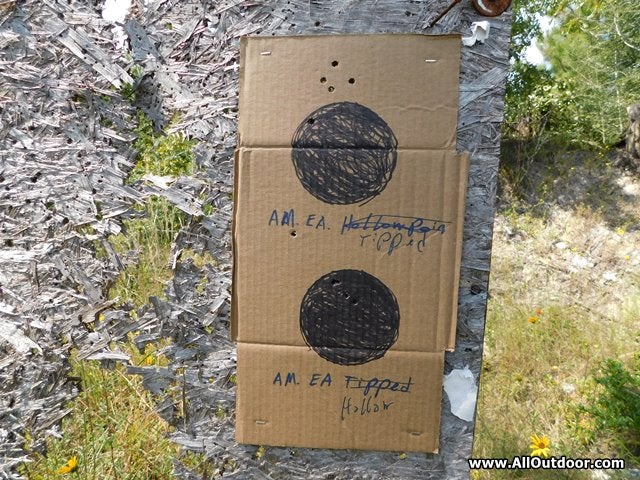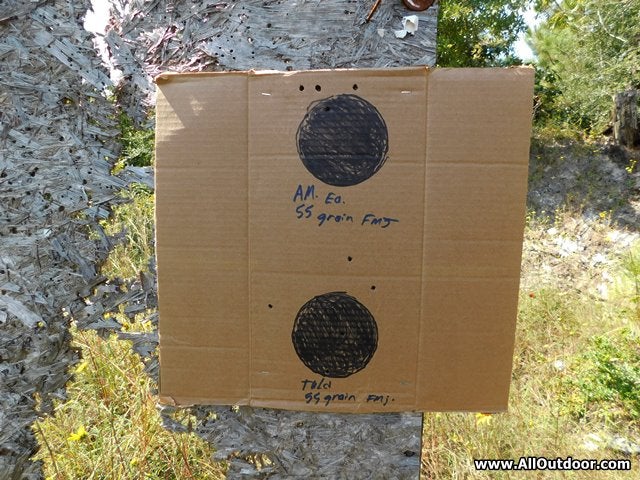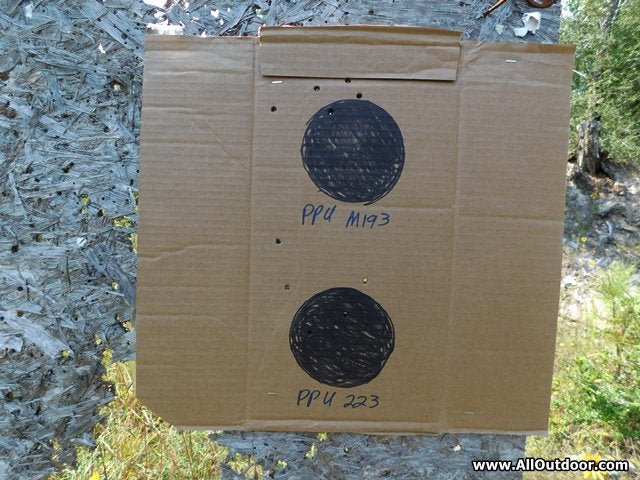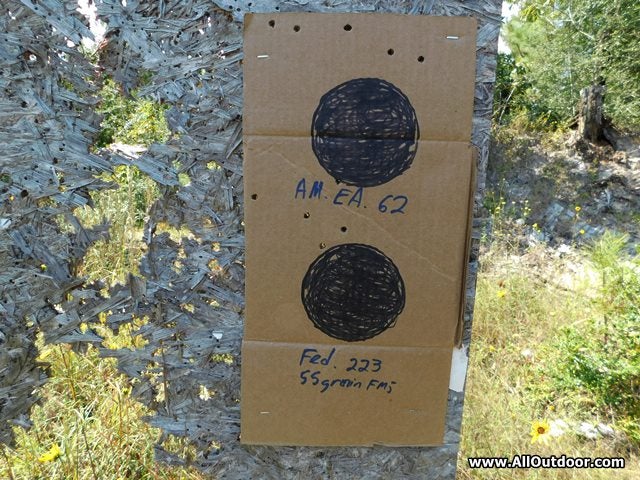Review: Accuracy-Testing the PSA Freedom, a Budget AR-15
Kevin Felts 09.27.17

The PSA Freedom line from Palmetto State Armory (PSA) is marketed as an economy AR-15. One difference between the Freedom line and other PSA products is that the barrels of the Freedom rifles and uppers are not chrome-lined. Since chrome lining a bore is expensive, the cost savings is passed down to the consumer.
A lot of people on YouTube call the Freedom line cheap ARs. The question is, are they cheap in quality or just cheap in price?
This article sets out to test the accuracy of a PSA Freedom AR-15 upper receiver.
Test Rifle and Weather Conditions
In 2016 I built an AR-15 specifically for hunting predators here in southeast Texas.
Specifications
- PSA 16″ Mid-length, 5.56 NATO, 1:7, Melonite, Freedom, Keymod Lightweight Upper, model number 7779901.
- Mid-length gas system.
- Spikes Tactical stripped lower.
- CMMG lower parts kit, with fire control group.
- Impact Weapons Systems receiver end plate with quick-connect.
- Bravo Company receiver extension and buffer.
- PSA premium bolt carrier group.
- Standard charging handle.
- Nikon P-223 4-12×40 BDC 600
- Harris bipod.
Even though the rifle was built in 2016, it had less than 100 rounds through it before these tests.
Weather was clear skies with highs in the lower 90s. Winds were mild.

Ammunition
- American Eagle 50 grain tipped varmint
- American Eagle 50 grain hollow point
- PPU M193
- American Eagle 55 grain FMJ
- Federal 55 grain FMJ
- PPU 223 55 grain
- Tula 55 grain FMJ
- American Eagle 62 grain XM855
Ammunition for the tests came from my personal stockpile and were not supplied by anyone.
Except for Tula, this sampling may be considered middle-of-the-road. There are better, and there are certainly cheaper loads on the market.
Range
Since I live in a rural area and do not have access to a real shooting range (within reasonable driving distance), all the shooting was at a local sand pit. Estimated distance to the target is around 80 to 90 yards.
The rifle was stabilized with its Harris bipod and a sandbag under the pistol grip.
I tried to fire the rifle with as little human contact with the rifle as possible. All the shooter did was adjust the sandbag under the pistol grip, and pull the trigger.
An estimated 30 rounds were fired before testing began. This was to make sure the Nikon scope was sighted in.
Results
Five rounds of each type of ammunition were fired. Then, the best four out of five were measured.
Between each shooting session, the rifle was placed in the shade to cool off. While the rifle was in the shade, pictures were taken, video was recorded, and new targets were set up.
At the start of each test, the barrel was barely warm to the touch.

American Eagle 50 grain tipped varmint – 1 inch.
American Eagle 50 grain hollow point – 1 inch.

American Eagle 55 grain FMJ – 2 1/8 inches
Tula 55 grain FMJ – 4 7/8 inches.

PPU 55 grain M193 – 1 1/2 inches.
PPU 223 Remington – 2 3/4 inches.

American Eagle 62 grain XM855 – 5 inches.
Federal 55 grain FMJ – 2 1/4 inches.
Results
Here are the results from best to worst. Keep in mind, this is measuring the closest 4 hits out of each 5-shot group.
- American Eagle 50 grain tipped varmint – 1 inch
- American Eagle 50 grain hollow point – 1 inch
- PPU M193 – 1.5 inches
- American Eagle 55 grain FMJ – 2.125 inches
- Federal 55 grain FMJ – 2.25 inches
- PPU 223 55 grain – 2.75 inches
- Tula 55 grain FMJ – 4.875 inches
- American Eagle 62 grain XM855 – 5 inches
It appears that as bullet weight increased, accuracy decreased.
Let’s compare these results to a video from The Firearm Blog.
James at The Firearm Blog put together an excellent video comparing a PSA Freedom rifle to a Mini-14. By the end of the video, it was evident the Freedom rifle failed miserably. So I set out to test my own rifle. The results of my tests were in line with the accuracy James obtained with his rifle.

So, what do you think about the accuracy tests of the article and the video from The Firearm Blog?
Is there anything readers suggest to improve the accuracy?
